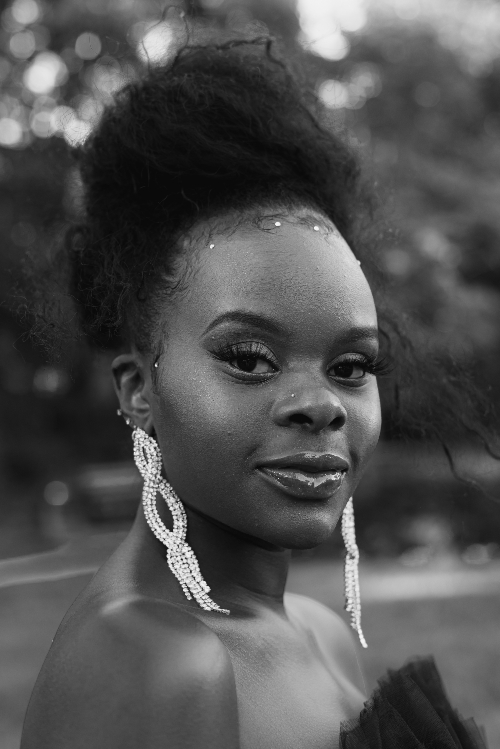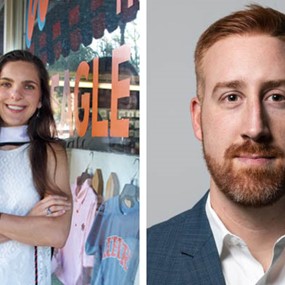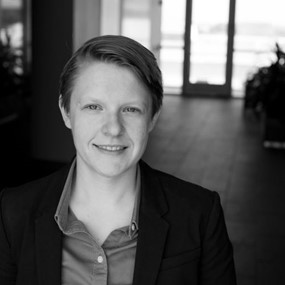Alumni Spotlight: Tracy Awino, NYC-based photographer and 2017 journalism graduate

Tracy Awino, a 2017 journalism graduate, is now in New York City working as a professional photographer. Her impressive portfolio includes notable clients such as Keenan Thompson, Ben Affleck, Pop Smoke, Kaash Paige, Logan Browning, and companies like Reebok, and Adidas. Her work has been featured in Billboard Magazine, US Open official social accounts, and Bleacher Report.
As a visual artist and storyteller, Awino focuses on portraying the multidimensionality of blackness. While 2020 has shone a spotlight on the many issues our country is facing, it has not yet succeeded in creating a new ideology around race. Awino has taken it upon herself to do something about the racism that she sees and experiences.
Tracy Awino arrived in the United States from Kenya when she was only fifteen years old. Her mother had been working in the U.S. for nine years and wanted the family to come back together so Awino could finish her education in Alabama. Before attending school in the U.S., Awino had spent most of her time in boarding school.
She and her family moved to Homewood, Alabama, where she would attend high school. As she started school, Awino developed big plans of where she would attend college and what her future would look like now that she was in the U.S.
However, living in Homewood was not as carefree as she expected. Awino looks back on these years as some of the toughest experiences of her life. Her peers had never heard of Nairobi, her hometown, and would develop assumptions about her and her family when she mentioned that she had come from Kenya. In addition, Awino explained that Kenya’s school system is much different and far more rigorous than those in the United States and so when she moved, her grades were misinterpreted, and she was placed in classes far beneath her academic level. She said, “They put me in all the wrong class. Instead of asking me questions, they made assumptions about where I belonged.”
Nevertheless, she received a full scholarship to Auburn University and decided to enroll. Coming to Auburn made a big difference in Awino’s life. At Auburn, she excelled. She was a Provost Leadership Undergraduate Scholar for all four years and belonged to the National Honor Society of Collegiate Scholars, and Alpha Lambda Delta Honor Society. She took on responsibilities as a content director of Eagle Eye and as a DJ at WEGL. She also served as a committee member of UPC and made numerous appearances on the Dean’s List for her grades. It was here that she met African Americans who were just like her and she was able to find many commonalities. This reminded her further that her high school experience, as she said, “was just not real.”
While at Auburn, primarily two women influenced Awino. The first, Susan Brinson, a communication professor, taught a class about diversity and race in the media. Awino said, “This class was so eye-opening. It challenged me in so many different ways.” The second, Ann Bergman, was her boss at the City of Auburn Parks and Recreation Office. Awino’s position here began as an internship but turned into a job following her graduation. Awino described Bergman as having allowed her to explore her creative interests in a job that was not particularly meant to be creative.
During her time at Auburn Parks and Recreation, there was a big USTA tennis tournament in Auburn. The Friday before the tournament, the scheduled photographer got sick and dropped out. The next thing she knew, Awino’s director approached her and told her that she would need to photograph the event. Awino said, “I went home and googled how to shoot tennis.” When the tournament day came around, she shot the players and just a few days later, she received a message from a U.S. Open representative. The woman, Qianna Smith-Bruneteau, who was at the time the director of social media for the USTA, had seen Awino’s photographs of the USTA tournament and wanted her to come the New York and shoot for the U.S. Open.
Three weeks later, Awino flew to New York at 22 years old to shoot the U.S. Open. Although sports photography is a primarily an older white male-dominated industry, she found herself on a team with all young black photographers, but she was still the only woman on her team. Following the tournament, she was asked to come back the next year. At that point, Awino knew that she had to move to New York City.
Awino recalled that her sister, who was twelve at the time, said, “if you don’t do it, you’re always going to wonder what would have happened if you went.” Awino then bought a one-way ticket to New York with only five hundred dollars in her bank account. She landed in New York City with two bags and gave herself five days to find a job, and thirty days to find an apartment.
Today, as a professional photographer capturing the multifaceted nature of people who are viewed as one-dimensional. When asked who her most memorable clients is to date, Awino said, “I deeply enjoyed working with Pop Smoke. He was so full of life and so eager. He had an eagerness about life and what was to come.” The work that she did with Pop Smoke would later become a mural in Brooklyn.
“Blackness is not one-dimensional. It's sometimes offered up as one-dimensional but it's not,” said Awino. Awino offered up an example, she said that oftentimes when people hear about a young African American man that grew up in south-central Chicago, a picture is already painted in their head of who exactly that man is before they ever know anything about him. “You think he probably grew up in the hood, most likely sells or does drugs, and if he’s lucky, he might know his dad’s name. Most people assume there’s only one side to him, but to me, I’ve seen so many facets of blackness, and I know he’s more than just a product of his pain,” said Awino.
Both in her career and in her personal fight against the racism, Awino aims to tell the stories of Black people that are not being told. “I want to tell the story of a single black dad who's happy, works full time as an engineer, and is raising a very kind black boy who will grow up to really be something one day. Because that story exists somewhere and it deserves to be told,” Awino said.
When asked what it takes to be successful in New York City, Awino said, “Persistence and being resilient. You cannot lose sight of why you came here in the first place. A lot happens here, and it happens very quickly. There are so many things that you could be doing, and every day goes by so fast. You can get caught up doing your steppingstone job forever if you are not careful.”
As a photojournalist, Awino said she knows that the media is one of the most powerful resources that was ever created, and she has seen how representation in the media can affect how people are viewed and treated. To any student wanting to succeed in photojournalism, Awino advised, “Experiment and don’t get hung up on the idea of your dream. Figure out if it is really your dream or someone else’s dream. Experiment with different levels of that dream. Allow yourself to evolve into the best version of what your dream might be.”
Tags: Alumni Communication and Journalism Diversity, Equity, and Inclusion






